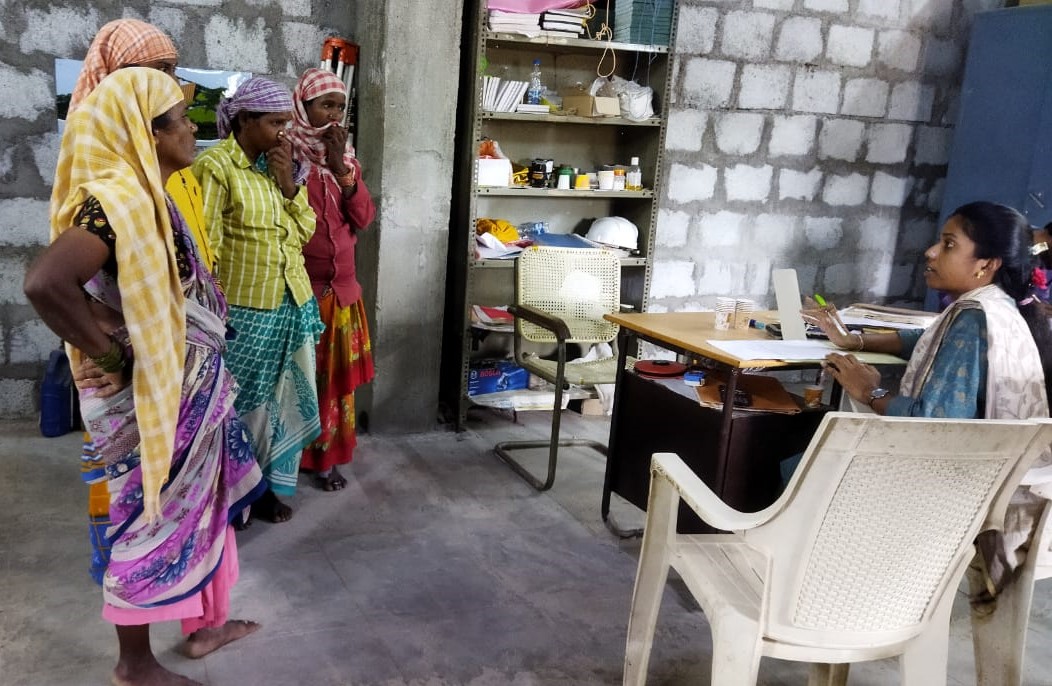The Language of Law School: Learning to "Think Like a Lawyer" (Book Review)
- Elizabeth Mertz.
- July 26, 2020
Content :
EVALUATION AND CONCLUSION
This book The Language of the law school_ learning to think like a lawyer generally based o the co concept that how a law student should study like a lawyer how to think like a lawyer etc.
INTRODUCTION
Entering the world of US LAW
Many things have been written about the first year law students like when they entered the class of contract law for the first time. This book mainly deals with the analysing much of the US legal language. There is a core approach to the world and to human conflict that is perpatuated through U.S. legal language.This legal worldview and the language that expresses it are imparted in all of the classrooms studied, in large part through reorienting the way students approach written legal texts. This reorientation relies in important ways on a subtle shift in linguistic ideology.Although apparently neutral in form, in fact the filtering structure of legal language taught to students is not neutral.There is a “double edge” to the approach found in U.S. legal language it offers benefits but also creates problems.There is also a cultural invisibility/dominance problem in law school classroom interactions, where learning the apparently neutral language of the law appears to have different effects on students of different races, genders, and class backgrounds.although this study finds a shared underlying epistemology imparted in diverse classrooms, it also delineates significant differences among law schools and law teachers, and in terms of content and form, legal education and the language it inculcates mirror a “double edge” arguably found in capitalist epistemology more generally.
LAW, LANGUAGE and LAW SCHOOL CLASSROOMS
As in the first chapter it is noted that there are almost eight law school some of them are very good and famous there but some of them are local. Night classes are also taken by professors for part time students. There it was found that for different races of peoples there are different law schools. This study shows that there are differences among people. But many generations have studied that how the language play a crucial part in human societies and interactions between them. These people realized that language have a very important role in socialization of human beings. Formal education typically takes place through linguistic exchanges in classrooms and through interaction with written texts.Here scholarship also helpful in studying about interactions. scholarship on law school teaching has debated the relative value of distinctively legal teaching genres, most notably the Socratic method.
STUDY DESIGN METHODOLOGY AND PROFILE
For assessing the first year law students there are combining method that are used there.
SIMILARITY LEGAL EPISTEMOLOGY
In this we talked about Learning to Read Like a Lawyer: Text, context, and Linguistic Ideology. In this we read that as teaching the first year law students main focus is given on giving the written text to these students.
Different teaching styles used by the law professors.A core feature of U.S. legal epistemology, vividly visible in law school classrooms, is the new relationship created for legal readers with language and text. After becoming a legal person identity and social contents of legal epistemology Conley and O’Barr urged that was to o bring together a bigger picture generated by sociological analyses of law with there on the ground understanding achieved by fine-grained study of legal language so we have seen the importance of such a marriage to grasping the message and import of legal pedagogy as it shapes incipient legal practitioners.
DIFFERENCE SOCIAL STRUCTURE IN LEGAL PEDAGOGY.
In order to make understand the concept. Professors used different styles for teaching their law students. There are variations in teaching styles like Socrates has different style in teaching his students his class was fulled with heavily lectures.
STUDENT PARTICIPATION AND SOCIAL DIFFERENCE:
Race, Gender, Status and Context in Law School Classes. found a high degree of variability in terms of minority participation rates at times disproportions in favour of white students.Since many years there has been the continuing research doing on the gender differences in classrooms. There are many reasons due to which number of female participation declined everyday. Girls are rewarded for docility, whereas boys are more likely to receive meaningful and extensive instruction when they encounter difficulties and are also more likely to be called on. In a math contest between the boys and girls in a different class, one teacher kept score under the headings “Good Girls” and “Brilliant boys.”4 Studies indicate that black female students are the most affected by this exclusive pattern, although there are also encouraging indications of African American girls’ psychological resilience in the face of this exclusion. Studies of college education show a similar pattern and have linked the chilly classroom and campus climate to a gradual process whereby women “revise and scale down their career goals.the Harvard study identified a number of differences between men’s and women’s speech patterns that contributed to inequalities in student participation:
1. In the relatively freewheeling discussion format of these classrooms, women students were more vulnerable to interruption and often did not come back from being interrupted to talk again.
2. Women students tended not to compete with men students for floor time, instead interrupting one another so that they wound up competing for the relatively scarce female-dominated floor time.
3. Women and men tended to speak in clusters or runs, rather than speaking dispersed patterns; this meant that any existing pattern of domination or under representation would only be heightened Difference
4. These teachers often let an emphasis on “keeping the flow of discussion going” take priority over encouraging inclusion, permitting those with the quickest response time to dominate classroom discussion; participation then became “based on quick thinking instead of deep or representative thinking” and was biased toward the more verbally assertive (who in this study tended to be white males as opposed to “minorities of either sex” or white females).
5. Because participation earlier in the class session was the best predictor of participation overall, a bias toward volunteers with the quickest response time early in the class contributed to a growing hierarchy in participation overall.
Classroom patterns and Socrates dilemma – More and more boys participated as compared yo girls students. Participation of males is more than females. There were eight classrooms out of which six are under males. Males spoke more fluently than females. These six classrooms are under man and only one of the class taken by female and rest all the class of these six classrooms are with man. This study’s findings on gender tend to support the picture that has emerged from other research on classroom dynamics.
Reading, talking and thinks like a lawyer- In this volume, followed the very particular shape of lawyers training in the normative, mediated through attitudes toward text, authority, and language. As when a student entered in the world of law then from the first time he or she should learn from legal view point just like a lawyer. They all should talk like a lawyer among themselves, they should not hesitate while taking to unknown person or whoever else. They should think like a lawyer, they should talk also like a lawyer. At the initial stage they face difficulties but after a period of time law comes in their habit. “Taking a position” as an interlocutor in a dialogue is a necessary part of gaining power for legal actors.Lack of assurance, breakthroughs of genuine affect, indexing through tone and gesture a failure to play the role, and silence are gaps in the dialogue—or worse, refusals to acquiesce in the ongoing metapragmatic structuring of discourse. Doing structuring is the key feature of law socialization. At the same time, traditional outsider students continue to be deferentially silenced in the prototypical law school classroom.As such routes are closed in the course legal education, nascent lawyers learn an increasingly closed discourse, widen the gap between themselves and their future clients.
Legal Language and American Law: Authority Morality and Linguistic Ideologies-
return now to the themes with which the book began, with the added vantage given by our in-depth examination of similarities and differences across the classrooms of this study.return now to the themes with which the book began, with the added vantage given by our in-depth examination of similarities and differences across the classrooms of this study.some kinds of context are ignored or omitted, creating a blind spot in the understanding of social conflict taught to law students.On the one hand, this means that legal language is deeply imbricated with social power in multiple ways. On the other hand, the independent importance of this linguistic level means that the process of legal training in particular, and of legal translation in general, cannot be analyzed as a mere reflex of power dynamics.Thus, another important step would be taken if law schools were to achieve and teach a more self-conscious understanding of the limitations of legal language for apprehending social phenomena, training students to be wary of the hubris that inheres in law’s aspiration of universal translation across so many diverse social realms.
Now the importance of context-
In a sense, this study’s results demonstrate the very practical utility of these contextualize approaches in making sense of empirically observable patterns. For example, some research on gender in college classrooms has assumed that results from studies conducted in different schools addressed the same phenomenon. discourse style—is necessary if we are to understand what combinations of contextual factors help to produce more inclusive classrooms. We have seen that smaller, more informal classrooms do not necessarily produce gender equality, and that there are nuanced differences among Socratic teachers that can contribute toquite different senses of context for students.In the move to a more complex view, we can draw on the work of scholars who have written on race and identity, such as Maria Lugones and Kimberley Crenshaw. These writers have argued that the experience of people at the margins of society can contribute to our understanding of human experience in general, because certain aspects of the formation of identity that are problematic for everyone are brought into still sharper relief in the experience of those who must negotiate across more boundaries in our society. First, law professors in all of the first-year classrooms of this study are heavily focused on teaching a legal reading of cases, which is a genre unlike any students had likely encountered before law school.Secondly there are differences among the type of law school. As there a wide difference among a local law school and a known university. Third, there are individual differences among professors that do not map neatly onto traditional status hierarchy divisions.Social theorist Moishe Postone has pointed out that there is a “double character” peculiar to capital, time, and labour in capitalist societies. James Elkins also pointed out the central role of talking like a lawyer to the construction of the legal persona and its characteristic mode of thought. Focusing on ideology, according to Woolard and others, “makes a promising bridge between linguistic and social theory. “As have linguistic anthropologists working in other settings, I, too, have found that linguistic ideology forms a crucial organizing backbone for ongoing linguistic interaction and socialization.
Michael Silverstein notes that any indexical process, wherein signs point to a presupposed context in which they occur (i.e., have occurred) or to an entailed potential context in which they occur (i.e., will have occurred), depends on some function to achieve a measure of determinacy or textual coherence. It turns out that the crucial position of Ideologies- of semiosis is in constituting such a “default” mediating metapragmatics. In short, ideology construes indexicality by constituting its metapragmatics. Ideologies- present invokable schemata in which to explain/interpret the meaningful flow of indexical.
The arrogance that accompanies a closed linguistic system can contribute to the alienation of lawyers and the legal system from the people they are supposed to serve, because it can prevent those speaking the language of law from truly hearing alternative perspectives.
Hence in the last I want to say that this book is very helpful for the beginners like me, as how we can develop our interest in law from the first day itself.












